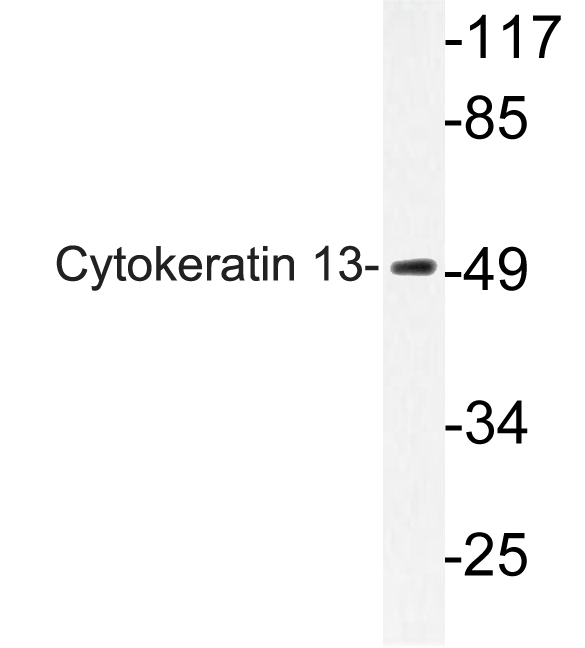Cytokeratin 13 antibody
GTX109883
ApplicationsImmunoFluorescence, Western Blot, ImmunoCytoChemistry, ImmunoHistoChemistry, ImmunoHistoChemistry Paraffin
Product group Antibodies
ReactivityHuman, Mouse, Zebra Fish
TargetKRT13
Overview
- SupplierGeneTex
- Product NameCytokeratin 13 antibody
- Delivery Days Customer9
- Application Supplier NoteWB: 1:500-1:3000. ICC/IF: 1:100-1:1000. IHC-P: 1:100-1:1000. *Optimal dilutions/concentrations should be determined by the researcher.Not tested in other applications.
- ApplicationsImmunoFluorescence, Western Blot, ImmunoCytoChemistry, ImmunoHistoChemistry, ImmunoHistoChemistry Paraffin
- CertificationResearch Use Only
- ClonalityPolyclonal
- Concentration0.59 mg/ml
- ConjugateUnconjugated
- Gene ID3860
- Target nameKRT13
- Target descriptionkeratin 13
- Target synonymsCK13, K13, WSN2, keratin, type I cytoskeletal 13, CK-13, cytokeratin 13, keratin 13, type I
- HostRabbit
- IsotypeIgG
- Protein IDP13646
- Protein NameKeratin, type I cytoskeletal 13
- Scientific DescriptionThe protein encoded by this gene is a member of the keratin gene family. The keratins are intermediate filament proteins responsible for the structural integrity of epithelial cells and are subdivided into cytokeratins and hair keratins. Most of the type I cytokeratins consist of acidic proteins which are arranged in pairs of heterotypic keratin chains. This type I cytokeratin is paired with keratin 4 and expressed in the suprabasal layers of non-cornified stratified epithelia. Mutations in this gene and keratin 4 have been associated with the autosomal dominant disorder White Sponge Nevus. The type I cytokeratins are clustered in a region of chromosome 17q21.2. Alternative splicing of this gene results in multiple transcript variants; however, not all variants have been described. [provided by RefSeq]
- ReactivityHuman, Mouse, Zebra Fish
- Storage Instruction-20°C or -80°C,2°C to 8°C
- UNSPSC12352203
References
- Chen CH, Lin DS, Cheng CW, et al. Cdc6 cooperates with c-Myc to promote genome instability and epithelial to mesenchymal transition EMT in zebrafish. Oncotarget. 2014,5(15):6300-11.Read this paper




![IHC-P analysis of human skin tissue using GTX80652 Cytokeratin 13 antibody [KS-1A3].](https://www.genetex.com/upload/website/prouct_img/normal/GTX80652/GTX80652_20191203_IHC-P_232_w_23061322_987.webp)
